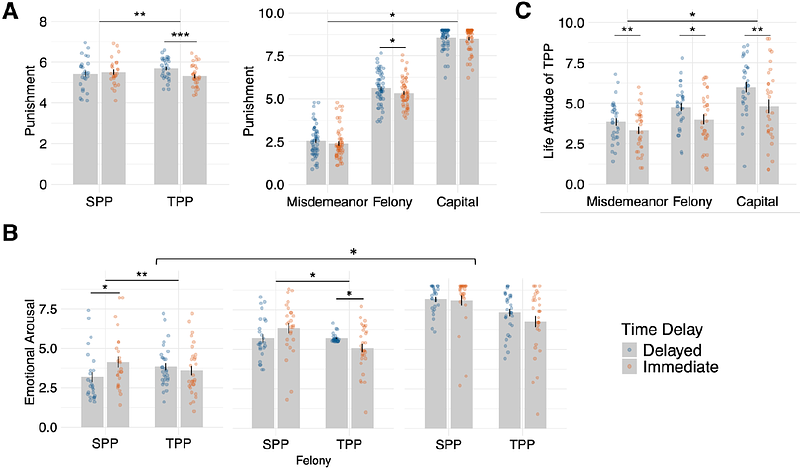Unraveling the Neurocognitive Mechanisms of Delayed Punishment in Second- and Third-Party Contexts

Unraveling the Neurocognitive Mechanisms of Delayed Punishment in Second- and Third-Party Contexts
Huang, J.; He, Y.; Chen, Z.; Cai, Q.; Yao, Y.; Wang, Y.; Qi, Y.; Wu, H.
AbstractSecond-party punishment (SPP) and third-party punishment (TPP) are essential in regulating social behavior and maintaining social norms, yet the effectiveness may wane when punishment is delayed. Currently, the decision-making and neural mechanisms underlying SPP and TPP under temporal delays remain largely unexplored. This study investigated both SPP and TPP punishment decisions with time-delay (immediate vs. delayed) using a hypothetical criminal scenario assessment task with fMRI. Results showed increased activity in the bilateral precuneus and left temporoparietal junction (TPJ) and stronger left TPJ-dorsolateral prefrontal cortex (dlPFC) connectivity in SPP compared to TPP. Interestingly, third-parties imposed more severe punishment in delayed conditions than in immediate ones, accompanied by enhanced neural activity in dorsomedial prefrontal cortex (dmPFC), left TPJ, ventrolateral prefrontal cortex (vlPFC), ventromedial prefrontal cortex (vmPFC), and caudate nucleus. This delay effect was evident only in misdemeanor and felony cases, with no differences in capital offenses, suggesting a moderating effect of criminal severity. In contrast, SPP showed no significant changes in punishment or neural response across immediate and delayed conditions. Multivariate pattern analysis further indicated that dmPFC, TPJ, vlPFC, vmPFC and caudate function together to encode punishment severity in TPP contexts, a pattern not observed in SPP. These findings underscore distinct decision-making mechanisms between SPP and TPP under temporal delays, with implications for understanding justice-related processing in the human brain under time constraints.